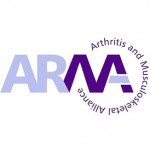The information in this briefing is based on the collated experiences of many of those shielding and information from patient helplines about the enquiries they were receiving earlier this year. For more information about the experiences of people with MSK conditions during lockdown, please see the report ‘MSK Lived Experience Themes of What Matters.’
Earlier this year, over 2 million people including some with musculoskeletal conditions, received a letter advising them to “shield” by remaining in their homes for 12 weeks. These were people identified as extremely clinically vulnerable to COVID-19. At the end of July shielding was paused. People identified as clinically extremely vulnerable are being written to again, giving them advice on what they should do depending on the risk level in their area.
People who were asked to shield had very different experiences of shielding. The pause in the advice also effected people differently depending on their circumstances and living situation. The advice was difficult to follow, requiring people to remain at home and keep their distance from others in their household. Children, parents, particularly of young children, people in work who couldn’t work from home and people living alone had particular difficulties. Responses varied from those who did not follow the advice fully, to those who are still shielding despite the advice that it is no longer necessary. Some people felt pressure from friends and family to meet up once shielding was paused, even when they did not feel this was safe.
Generally, people who were shielding experienced poor communication and difficulties accessing the support they needed, particularly food at the start of the shielding. Support required people to have the formal shielding letter, but there were many delays and errors in the distribution of the letters. During shielding, some became very isolated and keeping active was a challenge. Knowing how to safely access health care services was also an issue. About one third of those shielding are of working age, but the media image was almost always about older people. Government announcements rarely mentioned shielding. This left many people feeling forgotten and ignored.
People who were shielding are now being given guidance which is more clearly advisory, and depends on the risk level of the area they live in. They continue to need to access healthcare and may need face to face appointments or treatment. When you are talking to people who were shielding about how they should keep themselves safe, these are some things to bear in mind.
Understanding risk
Making rational decisions about risk is extremely difficult. Being told you are clinically extremely vulnerable adds to the concern and fear experienced by the general population. Shielding was reported as difficult and stressful. The end of the shielding period was also confusing and stressful for many. People will need time and clear information to help them decide how they balance risks over the winter. Understanding how much risk they face personally is an important part of this decision making.
The advice in April was very clear – stay at home. For some people the ability to make their own judgements is preferable to fixed advice. However, many find the new advice confusing and contradictory.
Accessing healthcare
Some people are still extremely anxious about the idea of coming into a healthcare setting. Very few people know what hospitals are doing to reduce the risk of infection. Make sure that anyone you ask to attend an in-person appointment knows what steps will be taken to keep them safe. Reassurance will help people attend. Discussions may be needed with transport to aid their arrival.
Employment
People in employment have significant problems, especially if they cannot work from home. Current advice for those living or working in a tier 3 area is that they are strongly advised to work from home if at all possible, but that if there is no alternative they can go to work. Employers should be ensuring that everything possible is put in place to protect those who are vulnerable to the virus, including a change of role if needed. Not all employers are as flexible or have the financial capacity to be adaptable.
During the COVID-19 period, employers were able to furlough people who could not work because they had been advised to shield. This gave people some protection. However, now this is not possible and anyone unable to work from home may have to rely on SSP or Universal Credit, both of which have eligibility criteria that people may not meet and are paid at a very low level. This process is also very slow.
People may need to discuss what “COVID-secure” means in relation to their risk levels. They also may be facing impossible choices between income and safety. Depending on the person’s work it may be impossible to make the job safe enough. These pressures are especially relevant for those who are self-employed, working in the gig economy or less secure working arrangements such as zero hours contracts.
Travel to work is also an issue where people need to use public transport. Travel to work is not mentioned in the guidance, but the advice is to stay off public transport if at all possible especially in tier 3 areas. Some people may be able to use the Access to Work scheme to pay for additional travel costs (e.g. taxi fares) if they need it due to being vulnerable to COVID19.

